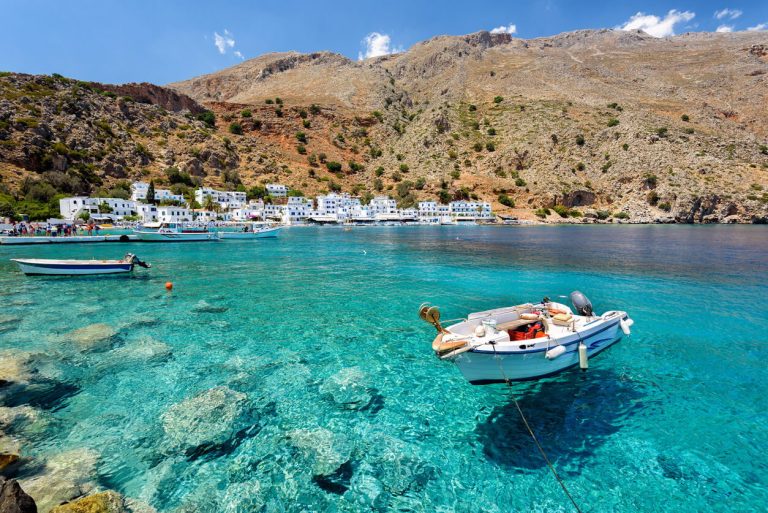
Crete, the largest island in Greece, is famous for its Mediterranean climate, beautiful beaches, and rich cultural history. However, another aspect that makes this island unique is its wild herbs. The hills and mountains of Crete are home to a plethora of herbs, each with its unique flavor, aroma, and medicinal properties.
One of the most popular wild herbs in Crete is oregano. Known as “rigani” in Greek, this herb has a strong, slightly bitter taste, and is commonly used in Greek cuisine. It is an excellent source of antioxidants, vitamins, and minerals, and has antibacterial properties that can help boost the immune system. You can find oregano in most supermarkets and herb shops in Crete, and it usually costs around 3-5 euros per 100 grams.
Another popular herb in Crete is thyme, also known as “thimari” in Greek. Thyme has a sweet, earthy flavor and is commonly used in stews, soups, and roasted meats. It is rich in antioxidants and has anti-inflammatory and antibacterial properties that can help fight infections. You can find thyme in most supermarkets and herb shops in Crete, and it usually costs around 3-5 euros per 100 grams.
One of the lesser-known herbs in Crete is dittany, also known as “eronda” in Greek. Dittany has a unique, spicy flavor and is commonly used in traditional Cretan remedies for digestive problems, respiratory issues, and menstrual cramps. It is also believed to have aphrodisiac properties. Dittany is a rare herb and can be challenging to find. You can try to find it in specialized herb shops, and it usually costs around 20-30 euros per 100 grams.
Another wild herb that is native to Crete is sage, also known as “faskomilo” in Greek. Sage has a slightly bitter flavor and is commonly used in meat dishes, soups, and teas. It is an excellent source of antioxidants and has anti-inflammatory and antibacterial properties that can help improve digestion and boost the immune system. You can find sage in most supermarkets and herb shops in Crete, and it usually costs around 3-5 euros per 100 grams.
Apart from these four herbs, there are many other wild herbs in Crete, each with its unique properties. For example, marjoram is a herb that is commonly used in stews and can help relieve headaches and indigestion. Rosemary is another herb that is commonly used in meat dishes and can help improve memory and concentration.
If you’re interested in trying some of these wild herbs, you can find them in most supermarkets and herb shops in Crete. You can also find them at local markets or by visiting traditional villages where locals sell them from their gardens. Prices vary depending on the herb and the location, but most herbs cost around 3-5 euros per 100 grams.
In conclusion, the wild herbs of Crete are a unique aspect of the island’s culture and cuisine. From oregano to sage, each herb has its unique flavor, aroma, and medicinal properties. Whether you’re a foodie or a health enthusiast, trying some of these wild herbs can be a fun and educational experience.
In addition to their culinary and medicinal uses, the wild herbs of Crete have cultural significance as well. Many of these herbs have been used for centuries in traditional Cretan remedies and folk medicine. They are also an important part of the island’s cuisine, and many traditional dishes rely on these herbs for their unique flavor and aroma.
One of the best ways to experience the wild herbs of Crete is to take a herb tour or visit a herb farm. Many local companies offer guided tours that take you through the hills and mountains of Crete to see the herbs in their natural habitat. You can also visit herb farms where you can learn about the cultivation and harvesting of these herbs and taste some of the products made from them.
One such farm is the Botanical Park & Gardens of Crete, which is located in the foothills of the White Mountains. The park has over 150 different species of plants, including many wild herbs of Crete. Visitors can take a guided tour of the park, taste the herbs, and even participate in herb workshops and cooking classes.
Another way to experience the wild herbs of Crete is to attend one of the many herb festivals held throughout the island. These festivals celebrate the local herbs and their cultural significance and include food tastings, workshops, and music and dance performances.
Overall, the wild herbs of Crete are a fascinating aspect of the island’s culture and cuisine. They offer a unique and flavorful experience that combines history, tradition, and health benefits. Whether you’re a foodie, a health enthusiast, or just curious, exploring the world of wild herbs in Crete is definitely worth the trip.
In addition to their culinary and medicinal uses, some wild herbs of Crete also have cultural and historical significance. For example, dictamnus, also known as “diktamo” in Greek, is a rare herb that was believed to have mystical and magical properties in ancient times. It was used by the ancient Greeks as a remedy for various ailments, and it was also believed to have the power to ward off evil spirits.
Another herb with cultural significance is chamomile, also known as “mikri chamomili” in Greek. Chamomile has a sweet, floral flavor and is commonly used in teas and remedies for its calming and relaxing properties. It is also a popular herb for weddings in Crete, where it is used in wreaths and decorations.
Wild herbs of Crete are also an essential component of the island’s traditional cuisine. Many Cretan dishes use wild herbs for their unique flavor and aroma. For example, the traditional Cretan dish of “dakos” is made with barley rusks, tomato, feta cheese, and oregano. Another popular dish is “stifado,” which is a stew made with beef, onions, and thyme.
If you’re interested in purchasing wild herbs of Crete, there are many local markets and herb shops where you can find them. Some of the most popular markets for herbs in Crete include the Municipal Market of Chania and the Heraklion Central Market. These markets offer a wide variety of fresh herbs, including oregano, thyme, sage, and rosemary.
Many herb shops in Crete also offer dried herbs and herbal products such as teas, essential oils, and cosmetics. These products are made from wild herbs grown and harvested on the island and are often of high quality and purity.
In conclusion, wild herbs of Crete are a unique and valuable part of the island’s culture and cuisine. They offer a wide range of health benefits and are a testament to the rich history and traditions of the island. Whether you’re interested in their culinary or medicinal uses, exploring the world of wild herbs in Crete is a fascinating and rewarding experience.


